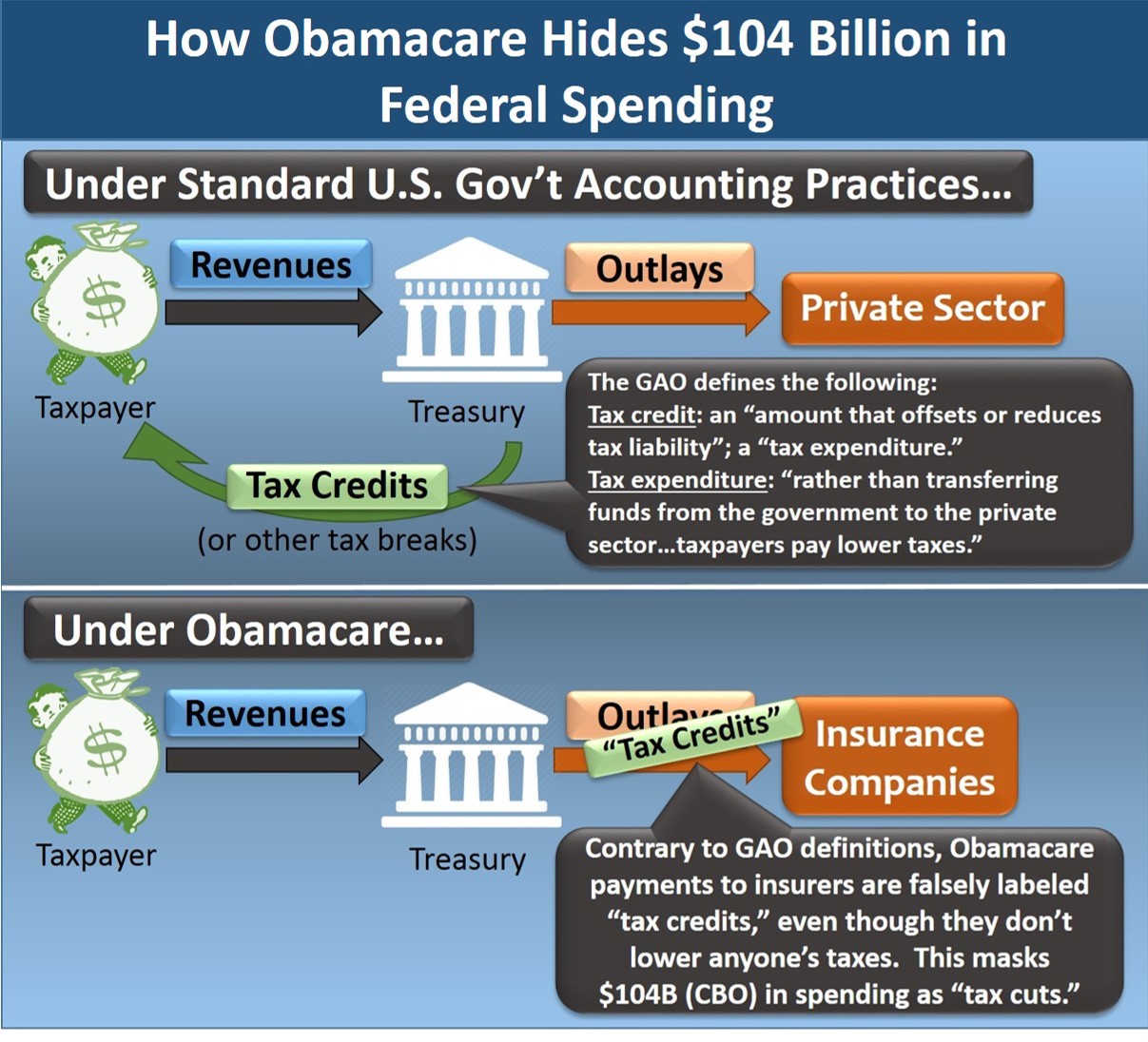As I highlighted in a recent WEEKLY STANDARD editorial, Obamacare has invented a dangerous new way to hide federal spending, including more than $100 billion designed to look like tax cuts.
In defiance of standard United States government accounting practices (and the government’s standard definitions of terms), Obamacare labels its direct outlays to insurance companies “tax credits” (not outlays)—even though they don’t actually cut anyone’s taxes. In this way, Obamacare is masking some $104 billion in federal spending over a decade—that is, the portion of Obamacare’s direct payments to insurers that the Congressional Budget Office is counting as tax cuts (see table 2).
If not stopped, this false labeling of federal outlays as “tax credits” stands to create a notorious precedent. It’s a novel way to mask essentially any federal spending that is tied to a particular taxpaying individual. By this rationale, for example, outlays under Medicare, up to the amount that a given senior pays in income taxes, could be re-labeled “tax credits”—and hence “tax cuts”—rather than spending.
The following graphic (see the full-page version here) depicts this false accounting:

Given how much money the federal government throws around (much of it borrowed), sometimes it can be hard to grasp the significance of a particular sum. But $104 billion—that’s 104 with 9 zeroes after it—is real money. To put that tally into perspective, it’s about 100 times what Hillary Clinton’s presidential campaign is expected to spend this year.
Jeffrey H. Anderson, author of an Obamacare replacement (An Alternative to Obamacare) and The Main Street Tax Plan, is a Hudson Institute senior fellow.

